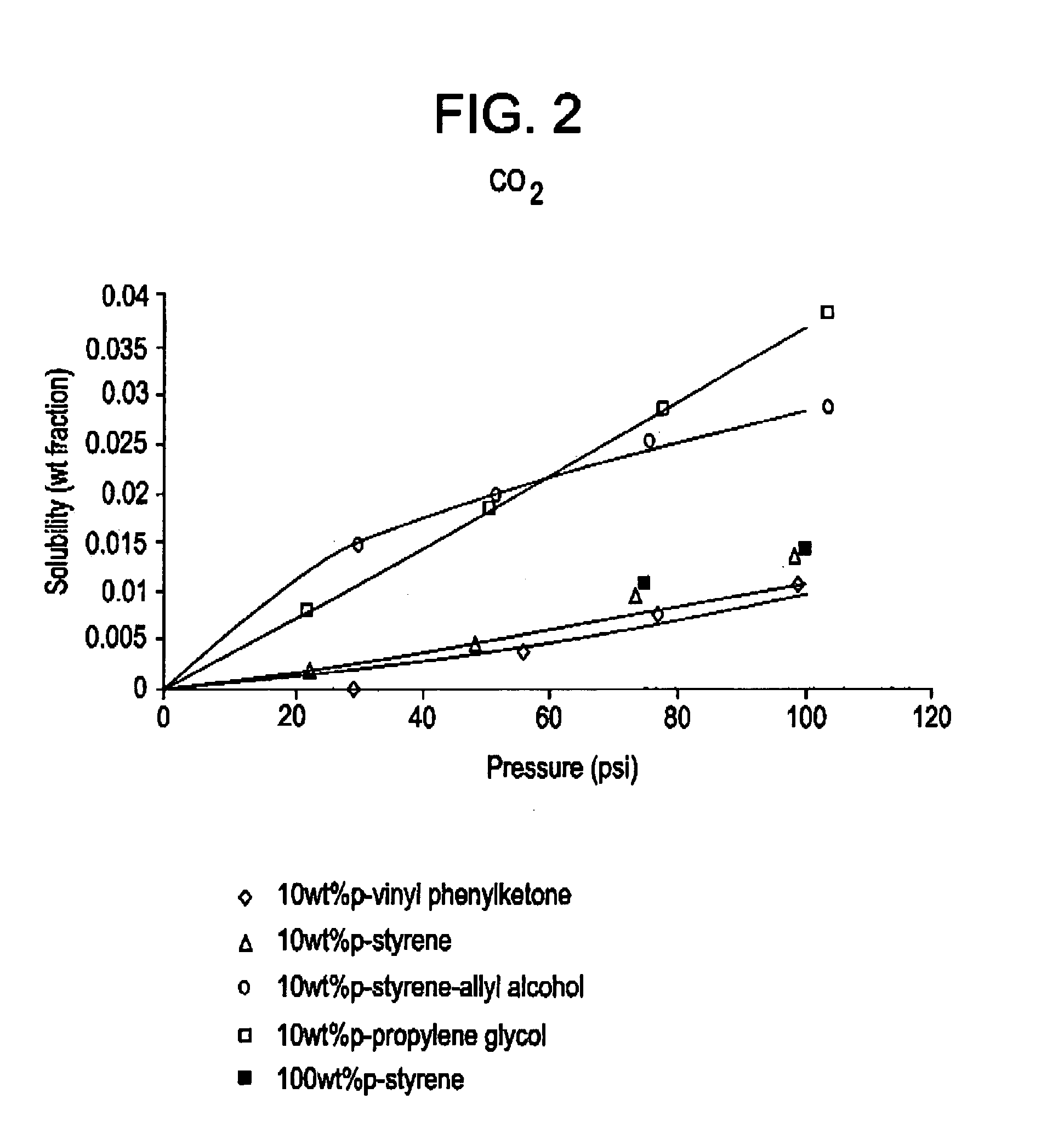Blowing agent solubility in polymers
- Summary
- Abstract
- Description
- Claims
- Application Information
AI Technical Summary
Benefits of technology
Problems solved by technology
Method used
Image
Examples
experiment 1
[0038]The activity coefficients, γCO24 and γ134a4, at infinite dilution for two blowing agents, CO2 and HFC-134a, respectively, were calculated for a number of representative oligomeric additives using the UNIFAC thermodynamic model. For example, to estimate the activity coefficients of these blowing agents in PS, diphenyl pentane was used as a representative compound. The results of these calculations are shown in TABLE 4. Other representative compounds such as for example ethyl benzene, styrene, diphenyl heptane, diphenyl butane or triphenyl octane should afford similar values.
[0039]Next, the activity coefficients for CO2 and HFC-134a were similarly calculated for several candidate oligomeric additives. The candidate additives were representative compounds selected from several classes of organic solvent, having a variety of different functional groups. TABLE 4 shows the results of the calculations.
[0040]
TABLE 4Solvent ClassFunctionalityRepresentative CompoundγCO24γ134a4Polystyren...
experiment 2
[0042]Using ethylbenzene as the representative polymer compound of PS, equations (4) and (5) were used to calculate the solubility of HFC-134a in PS at 150° C. and selected pressures, ranging from about 75 (˜517 kPa) to about 325 psi (˜2,240 kPa). The calculated solubilities were compared to experimental measurements of the solubility of HFC-134a in PS, reported in Sato, etal, Polymer Sci. Eng. 40:1369 (2000). As illustrated in FIG. 1, the experimental and calculated values are in excellent agreement.
experiment 3
[0043]The solubility of three blowing agents: CO2, HFC-134a and HFC-142b, in ethylbenzene was measured in the presence of three homopolymeric additives: 10% polyvinyl phenyl ketone; 10% polystyrene allyl alcohol; 10% poly propylene glycol. Ethylbenzene was chosen as the representative polymer compound for PS. The homopolymers were dissolved in ethylbenzene, and the weight gain of various blowing agents were measured at different pressures and a constant temperature. The homopolymers were selected based on the infinite dilution activity coefficients of the blowing agents in compounds having analogous functional groups, similar to that described above and illustrated in Experiment 1. The results, shown in FIG. 2–4, show that the solubility of blowing agents such as carbon dioxide, HFC-134a, and HFC-142b may be increased by as much as about three times, as compared to 100% polystyrene, by the introduction of homopolymers having polar functional groups such as alcohols and ethers. Moreo...
PUM
| Property | Measurement | Unit |
|---|---|---|
| Temperature | aaaaa | aaaaa |
| Force | aaaaa | aaaaa |
| Pressure | aaaaa | aaaaa |
Abstract
Description
Claims
Application Information
 Login to View More
Login to View More - R&D
- Intellectual Property
- Life Sciences
- Materials
- Tech Scout
- Unparalleled Data Quality
- Higher Quality Content
- 60% Fewer Hallucinations
Browse by: Latest US Patents, China's latest patents, Technical Efficacy Thesaurus, Application Domain, Technology Topic, Popular Technical Reports.
© 2025 PatSnap. All rights reserved.Legal|Privacy policy|Modern Slavery Act Transparency Statement|Sitemap|About US| Contact US: help@patsnap.com



